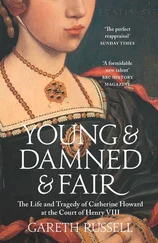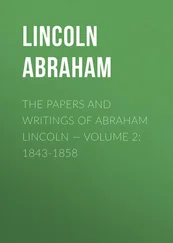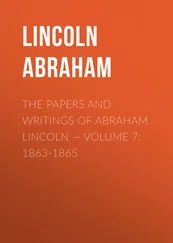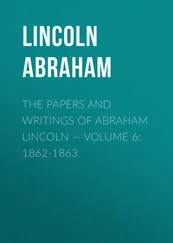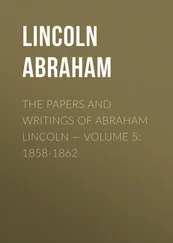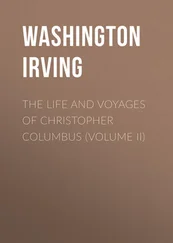Henry Fuseli - The Life and Writings of Henry Fuseli, Volume 2 (of 3)
Здесь есть возможность читать онлайн «Henry Fuseli - The Life and Writings of Henry Fuseli, Volume 2 (of 3)» — ознакомительный отрывок электронной книги совершенно бесплатно, а после прочтения отрывка купить полную версию. В некоторых случаях можно слушать аудио, скачать через торрент в формате fb2 и присутствует краткое содержание. Жанр: visual_arts, foreign_antique, foreign_prose, на английском языке. Описание произведения, (предисловие) а так же отзывы посетителей доступны на портале библиотеки ЛибКат.
- Название:The Life and Writings of Henry Fuseli, Volume 2 (of 3)
- Автор:
- Жанр:
- Год:неизвестен
- ISBN:нет данных
- Рейтинг книги:5 / 5. Голосов: 1
-
Избранное:Добавить в избранное
- Отзывы:
-
Ваша оценка:
- 100
- 1
- 2
- 3
- 4
- 5
The Life and Writings of Henry Fuseli, Volume 2 (of 3): краткое содержание, описание и аннотация
Предлагаем к чтению аннотацию, описание, краткое содержание или предисловие (зависит от того, что написал сам автор книги «The Life and Writings of Henry Fuseli, Volume 2 (of 3)»). Если вы не нашли необходимую информацию о книге — напишите в комментариях, мы постараемся отыскать её.
The Life and Writings of Henry Fuseli, Volume 2 (of 3) — читать онлайн ознакомительный отрывок
Ниже представлен текст книги, разбитый по страницам. Система сохранения места последней прочитанной страницы, позволяет с удобством читать онлайн бесплатно книгу «The Life and Writings of Henry Fuseli, Volume 2 (of 3)», без необходимости каждый раз заново искать на чём Вы остановились. Поставьте закладку, и сможете в любой момент перейти на страницу, на которой закончили чтение.
Интервал:
Закладка:
16
In the portico of the Piræus by Leochares; in the hall of the Five-hundred, by Lyson; in the back portico of the Ceramicus there was a picture of Theseus, of Democracy and the Demos, by Euphranor. Pausan. Attic. i. 3. Aristolaus, according to Pliny, was a painter, 'è severissimis.'
17
Cicero Oratore , 73. seq. – In alioque ponatur, aliudque totum sit, utrum decere an oportere dicas; oportere enim, perfectionem declarat officii, quo et semper utendum est, et omnibus: decere , quasi aptum esse, consentaneumque tempori et personæ; quod cum in factis sæpissime, tum in dictis valet, in vultu denique, et gestu, et incessu. Contraque item dedecere . Quod si poeta fugit, ut maximum vitium, qui peccat, etiam, cum probam orationem affingit improbo, stultove sapientis: si denique pictor ille vidit, cum immolanda Iphigenia tristis Calchas esset, mæstior Ulysses, mæreret Menelaus, obvolvendum caput Agamemnonis esse, quoniam summum illum luctum penicillo, non posset imitari: si denique histrio, quid deceat quærit: quid faciendum oratori putemus?
M. F. Quintilianus, l. ii. c. 14. – Operienda sunt quædam, sive ostendi non debent, sive exprimi pro dignitate non possunt: ut fecit Timanthes, ut opinor, Cithnius, in ea tabula qua Coloten Tejum vicit. Nam cum in Iphigeniæ immolatione pinxisset tristem Calchantem, tristiorem Ulyssem, addidisset Menelao quem summum poterat ars efficere mærorem, consumptis affectibus, non reperiens quo dignè modo Patris vultum possit exprimere, velavit ejus caput, et sui cuique animo dedit æstimandum.
It is evident to the slightest consideration, that both Cicero and Quintilian lose sight of their premises, and contradict themselves in the motive they ascribe to Timanthes. Their want of acquaintance with the nature of plastic expression made them imagine the face of Agamemnon beyond the power of the artist. They were not aware that by making him waste expression on inferior actors at the expence of a principal one, they call him an improvident spendthrift and not a wise œconomist.
From Valerius Maximus, who calls the subject 'Luctuosum immolatæ Iphigeniæ sacrificium' instead of immolandæ, little can be expected to the purpose. Pliny, with the dignè of Quintilian has the same confusion of motive.
18
It is observed by an ingenious Critic, that in the tragedy of Euripides, the procession is described, and upon Iphigenia's looking back on her father, he groans, and hides his face to conceal his tears; whilst the picture gives the moment that precedes the sacrifice, and the hiding has a different object and arises from another impression.
– ὡς δ' εσειδεν Αγαμεμνων αναξ ἐπι σφαγας στειχουσαν εἰς ἀλσος κορην ἀνεστεναξε. Καμπαλιν στρεψας καρα Δακρυα προηγεν. ὀμματων πεπλον προθεις.
19
Pliny, l. xxxv. c. 18.
20
Lysippum Sicyonium – audendi rationem cepisse pictoris Eupompi responso. Eum enim interrogatum, quem sequeretur antecedentium, dixisse demonstrata hominum multitudine, naturam ipsam imitandam esse, non artificem. Non habet Latinum nomen symmetria, quam diligentissime custodivit, nova intactaque ratione quadratas veterum staturas permutando: Vulgoque dicebat, ab illis factos, quales essent, homines: à se, quales viderentur esse. Plin. xxxiv. 8.
21
Μαλλον δε Ἀπελλης ὁ Ἐφεσιος παλαι ταυτην προῦλαβε την εἰκονα· Και γαρ αὐ και οὑτος διαβληθεις προς Πτολεμαιον —
Λουκιανού περι του μ. ῥ. Π. Τ. Δ.
22
Apelles was probably the inventor of what artists call glazing . See Reynolds on Du Fresnoy, note 37. vol. iii.
23
In matri interfectæ infante miserabiliter blandiente. Plin. l. xxxiv. c. 9.
24
A design of Raphael, representing the lues of the Trojans in Creta, known by the print of Marc Antonio Raymondi.
25
Reynolds' Disc. V. vol. i. p. 120. Euphranoris Alexander Paris est: in quo laudatur quod omnia simul intelligantur, judex dearum, amator Helenæ, et tamen Achillis interfector. Plin. l. xxxiv. 8.
26
See the Hymn (ascribed to Homer) on Apollo.
27
See the account of this in Vasari; vita di P. Brunelleschi, tom. ii. 114. It is of wood, and still exists in the chapel of the family Gondi, in the church of S. Maria Novella. I know that near a century before Donato, Giotto is said to have worked in marble two basso-relievoes on the campanile of the cathedral of Florence; they probably excel the style of his pictures as much as the bronze works executed by Andrea Pisani, from his designs, at the door of the Battisterio.
28
Masaccio da S. Giovanni di Valdarno born in 1402, is said to have died in 1443. He was the pupil of Masolino da Panicale.
29
Andrea Mantegna died at Mantoua, 1505. A monument erected to his memory in 1517, by his sons, gave rise to the mistake of dating his death from that period.
30
Luca Signorelli died at Cortona 1521, aged 82.
31
Lionardo da Vinci is said to have died in 1517, aged 75, at Paris.
32
The flying birds of paste, the lions filled with lilies, the lizards with dragons' wings, horned and silvered over, savour equally of the boy and the quack. It is singular enough that there exists not the smallest hint of Lorenzo de Medici having employed or noticed a man of such powers and such early celebrity; the legend which makes him go to Rome with Juliano de Medici at the access of Leo X., to accept employment in the Vatican, whether sufficiently authentic or not, furnishes a characteristic trait of the man. The Pope passing through the room allotted for the pictures, and instead of designs and cartoons, finding nothing but an apparatus of distillery, of oils and varnishes, exclaimed, Oimè, costui non è per far nulla, da che comincia a pensare alla fine innanzi il principio dell' opera! From an admirable sonnet of Lionardo, preserved by Lomazzo, he appears to have been sensible of the inconstancy of his own temper, and full of wishes, at least, to correct it.
Much has been said of the honour he received by expiring in the arms of Francis I. It was indeed an honour, by which destiny in some degree atoned to that monarch for his future disaster at Pavia.
33
Frà Bartolomeo died at Florence 1517, at the age of 48.
34
Michael Angelo Buonarotti, born at Castel-Caprese in 1474, died at Rome 1564, aged 90.
35
Like Silanion – 'Apollodorum fecit, fictorem et ipsum, sed inter cunctos diligentissimum artis et inimicum sui judicem, crebro perfecta signa frangentem, dum satiare cupiditatem nequit artis, et ideo insanum cognominatum. Hoc in eo expressit, nec hominem ex ære fecit sed Iracundiam.' Plin. l. xxxiv. 7.
36
When M. Angelo pronounced oil-painting to be Arte da donna e da huomini agiati e infingardi , a maxim to which the fierce Venetian manner has given an air of paradox, he spoke relatively to fresco: it was a lash on the short-sighted insolence of Sebastian del Piombo, who wanted to persuade Paul III. to have the Last Judgement painted in oil. That he had a sense for the beauties of oil-colour, its glow, its juice, its richness, its pulp, the praises which he lavished on Titiano, whom he called the only painter, and his patronage of Frà Sebastian himself, evidently prove. When young, M. Angelo attempted oil-painting with success; the picture painted for Angelo Doni is an instance, and probably the only entire work of the kind that remains. The Lazarus, in the picture destined for the cathedral at Narbonne, rejects the claim of every other hand. The Leda, the cartoon of which, formerly in the palace of the Vecchietti at Florence, is now in the possession of W. Lock, Esq. was painted in distemper (a tempera); all small or large oil-pictures shown as his, are copies from his designs or cartoons, by Marcello Venusti, Giacopo da Pontormo, Battista Franco, and Sebastian of Venice.
Читать дальшеИнтервал:
Закладка:
Похожие книги на «The Life and Writings of Henry Fuseli, Volume 2 (of 3)»
Представляем Вашему вниманию похожие книги на «The Life and Writings of Henry Fuseli, Volume 2 (of 3)» списком для выбора. Мы отобрали схожую по названию и смыслу литературу в надежде предоставить читателям больше вариантов отыскать новые, интересные, ещё непрочитанные произведения.
Обсуждение, отзывы о книге «The Life and Writings of Henry Fuseli, Volume 2 (of 3)» и просто собственные мнения читателей. Оставьте ваши комментарии, напишите, что Вы думаете о произведении, его смысле или главных героях. Укажите что конкретно понравилось, а что нет, и почему Вы так считаете.



